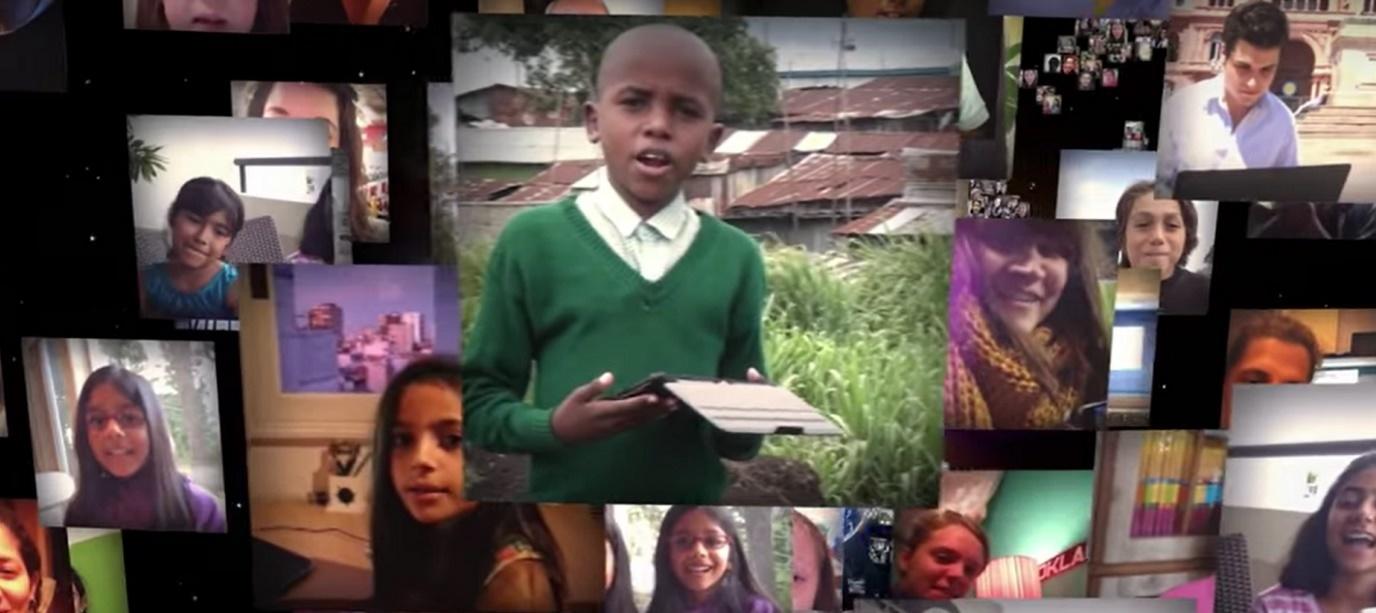Introduction
People possess differing views of technology: ardent users claim that it is the future of humanity, while skeptics argue that people should not rely on it too much due to numerous hazards. However, it is impossible to deny that technology is a widely used facet of life for most people around the globe. Programming has become an area associated with creativity, success, and the realm of the future.
One project promulgating this idea by enhancing learners’ motivation to program is the Hour of Code, which has already become an international movement (Du et al. 54). Ali and Hadi Partovi, founders of the non-profit organization Code.org that manages this project, stress that it provides young people with an opportunity to express their creativity and become successful. Many promotional videos are available online to introduce viewers to the idea and entice them to investigate further. This paper includes an analysis of some of these videos and explores the possible outcomes of the Hour of Code approach with a focus on the topics of creativity and success.
Hour of Code and True Creativity
While the promotional videos for Hour of Code target a wide audience that can include middle schoolers as well as older adults, the emphasis remains on school-aged children (and their parents), students, and young adults. In support of this claim is the fact that these videos feature celebrities who are popular among those in the above-mentioned age groups, stars such as Sarah Michelle Gellar, Shakira, and Ashton Kutcher, who offer inspiring words that relate well to the target audience (“The Hour of Code Is Here”).
In addition to talking about the project, these spokespersons demonstrate using the program in an attempt to motivate viewers to try it as well (see fig. 1). The entire experience is presented as being enjoyable and easy; the design of the videos seeks to convey that everyone trying the program is happy and satisfied. Another argument in favor of the claim that the creators of the video are targeting a young audience is the depiction of children and teenagers as program users (see fig. 2). The pictured school-age children appear motivated and completely absorbed in the project in particular as well as programming in general.

As the videos display, a primary goal of the non-profit and the project is to give individuals from different backgrounds and parts of the globe the opportunity to be creative and to master a highly promising profession. Viewers are tacitly invited to see the participating children as future programmers who will help humanity progress. The videos also feature Bill Gates, the famous philanthropist, maintaining that technology helps to reveal creativity (“What is Creativity?”).
Barak Obama, one of the most admired people in the United States, asserts that Hour of Code is a way to support computer science in all American schools (“Hour of Code – Worldwide”). Steve Jobs, an icon of success and innovation, is also featured, promoting the idea that everyone should be able to code (“The Hour of Code Is Here”). The messages thus articulated are simple and motivational, enticing viewers to try the product that Code.org is promoting.

As mentioned, success is a recurring theme in the videos. In one, Hadi Partovi addresses viewers with a direct request to help bring computer science to all schools and all children around the world (“Hour of Code – Worldwide”). Two teenaged girls featured in another video showing how coding is valued in many spheres of life and by many professionals, motivating young people to join and build their future careers (“The Hour of Code Is Here”). Importantly, the videos often link creativity with the concept of success, encouraging viewers to make a difference by entering a specific profession or at least to understand the basics of a specific discipline.
However, the videos do not show the other side of the projects and the possible goals of the founders. Brooks and Lindgren note that Hour of Code and similar projects are an attempt to address the “coding crisis” or the fear that those who do not program are programmed (1). Moreover, the researchers assert that the push to promote coding is deeply rooted in the desire of corporations (and the US government) to retain a leading position in the world (Brooks and Lindgren 1).
The founders of the non-profit Code.org affirm these assumptions by claiming the project was primarily launched to provide American children the opportunity to become competitive as adults (Delevett). At the same time, the would-be benefactors fail to mention that they and their contemporaries would benefit most if all the targeted children should share their ideas and innovate. Bill Gates’s corporation and the companies owned by Hadi and Ali Partovi as well as many major players in the industry will receive access to a potentially unlimited pool of human resources.
While employment for individuals, paired with corporations’ ability to earn billions, can be regarded as a win-win situation, another flawed facet of the project and associated campaign involves the way that creativity is presented. A central idea voiced in the videos is that coding is the best way to explore one’s creativity and make a difference in the modern world. However, creativity is not confined to technology—life involves much more.
Technology may be all-encompassing, but humanity has advanced in numerous areas. Science, the visual arts, and literature, along with many other areas, rely on creativity and the ability to innovate. Although technology is another sphere where people can and should be creative and innovative, it represents only one of many possible paths. Thus, a major weakness of the promotional campaign for this project is the idea that everyone should be programming.
Instead, it is important to acquaint learners with coding essentials while introducing them to a variety of other opportunities and prospects in various spheres. Of course, it remains essential to empower underprivileged groups and enhance their chances of landing a good job that will enable them to become successful. However, programming is not the only industry where people can realize their potential.
Such projects as Hour of Code or Girls Who Code can indeed help thousands of people and can be instrumental in achieving equity in society. For example, Girls Who Code aims at empowering girls and motivating them to enter a profession where females are underrepresented (“About Us”). However, this type of promotional campaign and the videos it generates can also cause much distress, especially for those who are not good at programming.
Pushing such programs exclusively can lead young learners to think that being able to code is the only way to succeed in the 21st century, which is not true. Although technology use will continue to grow year by year, human creativity will remain vital in numerous and varied spheres of life.
Finally, the technical aspect of the project should also be considered. Brooks and Lindgren claim that even in America, children may have limited or no access to technology (6). This means that millions of learners in Asia, Latin America, Africa, and North America cannot fully benefit from participating in the project. Furthermore, social stratification in many societies may hinder the benefits of the movement. Therefore, the people involved in implementing this project should pay close attention to the availability of resources.
Conclusion
In conclusion, it is necessary to emphasize that Hour of Code promises to be a helpful project that can enable thousands or even millions of people to succeed in life. However, the urgency in its presentation and the way it is promoted can exert certain undesirable effects. The targeted individuals may concentrate on programming and ignore other areas and industries, which may result in economic losses and other adverse outcomes.
On the positive side, it is possible to motivate children and teenagers to try coding and become acquainted with the basics of programming. This effort promises benefit for countries and individuals as people will be encouraged to continue developing technologies, empowering them to address such major issues as global warming or inequality. Nevertheless, it is also vital to ensure that the movement and the associated promotional campaigns will not be completely technology-centered to the exclusion of all other possibilities. Creativity is not confined to coding or using technology, and everyone must keep this fact in mind.
Works Cited
“About Us.” Girls Who Code, 2019. Web.
Brooks, Kevin, and Chris Lindgren. “Responding to the Coding Crisis: From Code Year to Computational Literacy.” Strategic Discourse: The Politics (New) Literacy Crises, edited by Lynn Lewis, Computers and Composition Digital Press / Utah State University Press, 2016, pp. 1-22. Web.
Delevett, Peter. “Partovi Twins Quietly Emerge as Top Silicon….” The Mercury News. 2016. Web.
Du, Jie, et al. “Hour of Code”: Can It Change Students’ Attitudes Toward Programming?” Journal of Information Technology Education: Innovations In Practice, vol 15, 2016, pp. 053-073.
“Hour of Code – Worldwide.” YouTube, uploaded by Code.org. 2016. Web.
“The Hour of Code Is Here.” YouTube, uploaded by Code.org. 2013. Web.
“What is Creativity? (with Bill Gates, Malala, Rosario Dawson, Lisa Loeb and Susan Wojcicki).” YouTube, uploaded by Code.org. 2018. Web.